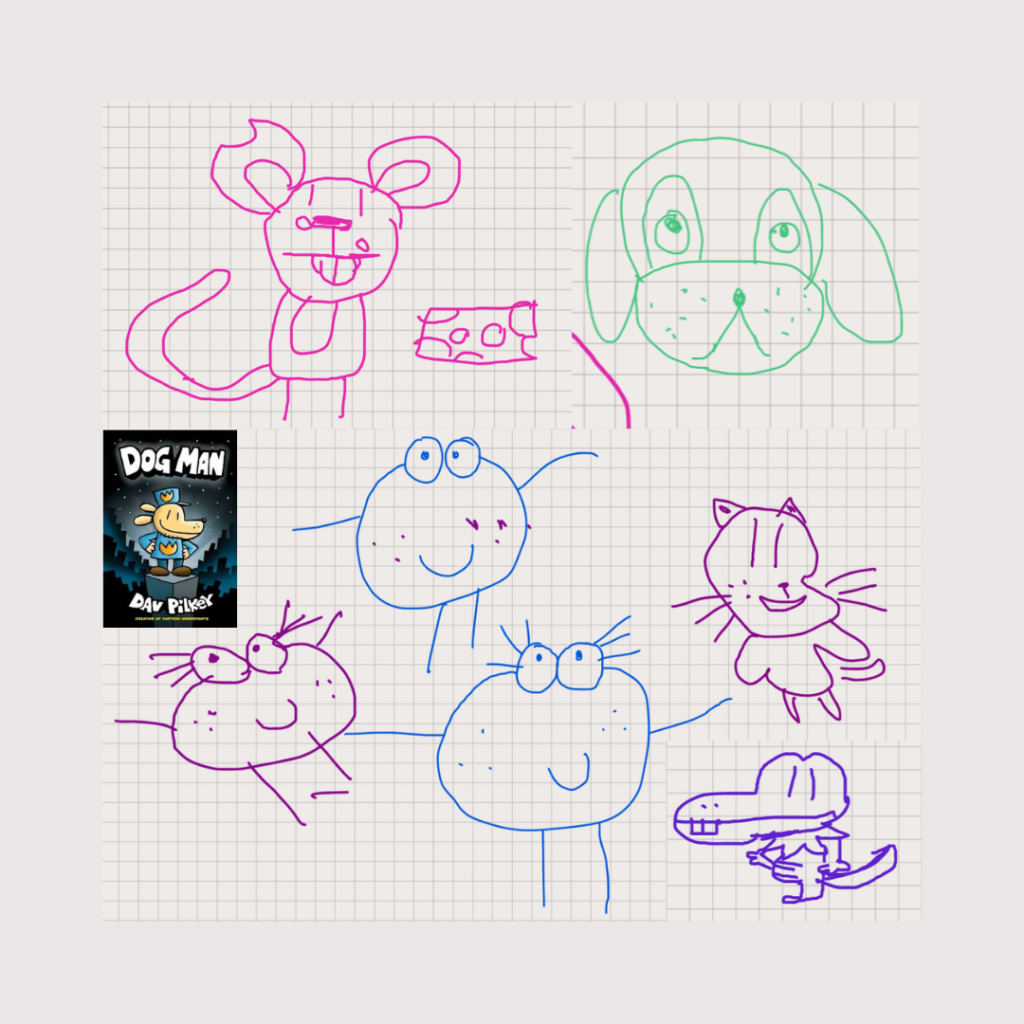Building Trust and Connections with Your Pupils for Effective Learning. Connecting with your pupils is paramount to creating an environment where they can trust you, relax, and truly begin learning. Create a safe space where they can relax enough to be able to learn. In this blog post, we will explore various strategies to help you establish these connections and create a positive learning experience for your students.
The main points are:
- Understanding Your Pupils’ Interests
- Seeking Common Ground to Make an Easier Connection
- Being Authentic
- Shifting Power Dynamics
- Establishing Trust for Better Learning Outcomes
- Gamification and Game-Based Learning
- Success Stories

These delightful little drawings were done for me on our BitPapers, by a 9-year-old pupil, E, who I had been teaching online for a month. She came to me with severe Maths Anxiety and was unable to cope with Maths at her school. She was deep into a cycle of anxiety and overwhelmed. A couple of sessions in, she was laughing, joking, and happily drawing me pictures and engaging well with our Maths lesson. A complete change in her feelings towards maths in less than a month!
What magic had I managed to do, you may well be asking?
No magic, just loads of empathy and other strategies which help bring down the anxiety and the barriers to learning and have enabled her to start to enjoy Maths and learning again. I had made sure that I was:
- 😊 Acknowledging her feelings and allowing her to feel heard and her opinions validated.
- 😊 Giving her rewards for each small part of the lesson she engages with – which is called Gamification. For her, she can draw on the BitPaper whiteboard as a reward.
- 😊 Plenty of game-based learning. Simple games I have made up myself on the BitPaper. Which is also a Gamification strategy.
- 😊 She is very into the Dogman books by Dav Pilkey. I understand why she does as they are aimed at her age group. But what she also particularly loves about all his books is that she knows that he is also Dyslexic and has ADHD, just like her. That makes her feel a connection to the author.
- 😊 She knows that I have Dyslexia and ADHD, too and has done from when she first met me – I have made no bones about my Neurodiversity. It obviously matters to her that she doesn’t feel different when she is with me or feel the need to mask her wonderful quirky nature. We have solidarity, and that helps her feel ok about herself.
- 😊 Allowing her ‘to be the expert’ also helps raise her confidence. She has been teaching me how to draw each of the characters in the stories. She glows with pride as she shows me how and watches me try to copy her.
- 😊 Feeling like she has no time pressure in what we are doing helps relieve pressure on her working memory and processing speed. I give her as much thinking time as she needs.
Understanding Your Pupils’ Interests:
Find out what your pupils actually like doing. What makes them excited and confident? Show genuine interest in their hobbies and passions. Ask them at the start of lessons, and let them tell you something they like talking about.
Seek common ground to create a connection. Is there any overlap between their interests and yours? If you can find something, it will make lessons more pleasant for both of you.
Being Authentic:
Embrace your authentic self when engaging with your pupils. Take down your mask a bit and let them see you as a person. It will help them trust you more.
Be open about your own experiences and challenges, such as Neurodiversity. Feeling some solidarity will again strengthen the connections.
Shifting Power Dynamics:
Empower your pupils by letting them take on the role of an expert in certain situations. What could you ask them and let them talk and show you about something they are interested in?
By showing interest in their ideas and achievements, they will gain confidence and pride in their abilities.
Establishing Trust for Better Learning Outcomes:
Trust leads to more effective learning and engagement. Acknowledge your pupils’ feelings and validate their opinions.
Allow ample thinking time to alleviate pressure on working memory and processing speed so they don’t become flustered.
Gamification and Game-Based Learning:
Incorporate rewards and game elements into lessons. Use simple, self-made games on digital platforms like BitPaper.
Success Stories:
Share real-life anonymised examples of your other students overcoming challenges and excelling in their learning journey. Sharing and giving aspirations will help students understand that it can work out ok for them, too.
What I have found out (the long and hard way)…
✅Always have a video call with prospective families before agreeing to tutor the child. Don’t just agree and sign them up over an email exchange or even a phone call. You need to see their faces and reactions and visa versa and be able to show them how you teach, particularly the tech set-up, to put them at ease,
✅That the time spent on this advice call always pays dividends in so many ways, and I can almost always convert the lead.
✅ Make sure that the child is ‘onboard’ with the idea of having a lesson with me and is, therefore, less likely to pull out or resist engaging with me.
✅ Spending time establishing a relationship with the parent and child at the start is far better than just saying yes to teaching them without setting expectations on both sides.
Conclusion:
By employing these strategies and fostering meaningful connections with your pupils, you can create an environment where they feel supported and comfortable, ultimately leading to more effective learning and personal growth.
If you’re interested in learning more about these strategies and how to apply them in your tutoring practice, consider joining our series of tutor training courses about Maths Anxiety. Learn at your own pace through a modular online course designed to help you enhance your teaching skills and better connect with your students.
👇👇👇👇👇👇👇👇👇👇
Click the link below to find out more, and sign up today!
Find out more and sign up for our tutor training courses here
